How to Deface a Swastika
The battle for r/Place offered a lesson in how to fight Nazis online and off
Edited by David Swanson
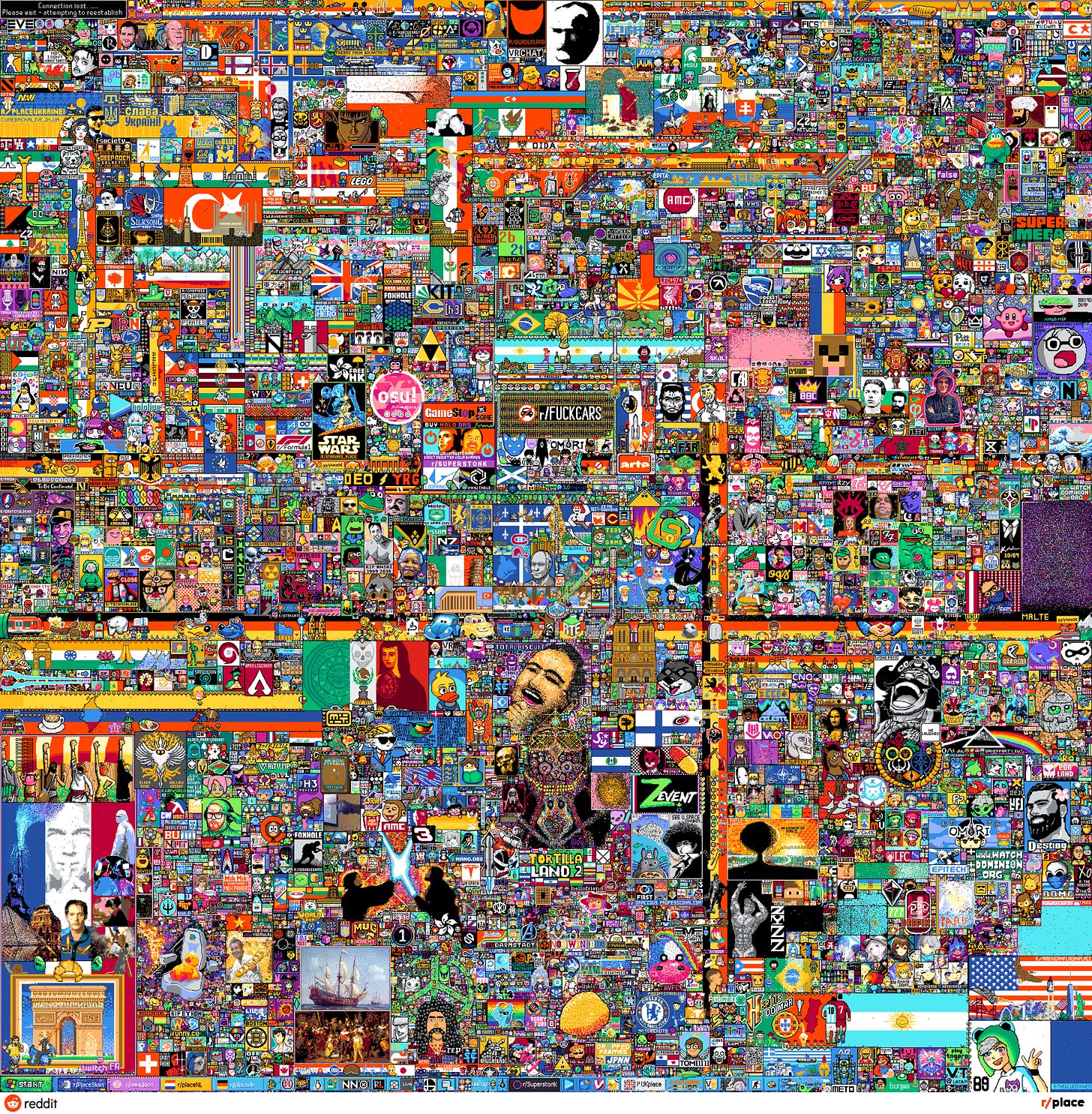
Over the weekend, I—along with a few million other people—became transfixed by an experiment on Reddit: the long-awaited return of r/Place, an interactive multi-user experience in which Redditors can place single pixels (with a five-minute lag time) in order to create designs on an otherwise blank canvas. To build anything ambitious or recognizably specific, Redditors had to join forces, in communities large and small, to execute artworks of varying quality over the course of three days, as the size of the digital canvas kept doubling. “As of Sunday night,” noted Taylor Lorenz in the Washington Post, “nearly 72 million tiles were placed by over 6 million users, at a pace of more than 2.5 million tiles placed per hour.”
“The idea was ‘Let’s put up a very simple microcosm of the Internet and just see what happens,’ ” r/Place founder (and Wordle creator) Josh Wardle told The New Yorker, in 2018. “Reddit itself is not the most complex idea. It’s sort of a blank canvas. The community takes that and does all sorts of creative things with it.”
This is one of the more remarkable features of r/Place: the way it creates a visual analogue for the Internet. There’s the sweet and patient labor of niche communities—from fans of the band Tally Hall to Tetris fiends to the concerted effort to insert Where’s Waldo into the mix. There was the best of nationalism—stalwart Netherlanders banding together to create pixelated canvases of Old Masters’ works; Italians reimagining the iconic touch of life in Michelangelo’s The Creation of Adam, but with a slice of pizza dangling from Adam’s hand—and the worst of it: countries attacking each others’ flags, the arrant eastward expansion of Germany, despite unfortunate historical precedent. Then there were the raids: coordinating on 4chan, on Discord, in the audiences of popular Twitch streamers and elsewhere, swarms of users and bots attacking inoffensive artwork, while leaving numerous images of Pepe the Frog—a popular symbol of the far right—intact.
There followed a furious swirl of drama; users sank frantic hours of their lives into, for example, defending the Canadian flag against the Bananada brigade (who kept transforming “Canada” into “Banana” and the maple leaf into... guess) and the stoners (who, instead, wanted to turn the maple leaf into a cannabis leaf and “Canada” into “Ganja,”) a three-day engagement that finally resolved in a blobby red mess. There was a “void” contingent seeking, on principle, to sow black squares of annihilation. A shapely ass was planted on the French flag, quickly censored. An enormous banner supporting Ukraine appeared. The Serbians, meanwhile, begged people to stop erasing their flag, as it is not in fact Russia’s—although they are very similar. At one point 4channers attempted to stage a virtual false-flag operation by making it seem like the trans community had raided the UK’s flag, in order to foment disorder. (I used up my few pixels defending the trans flag from random incursions.) It was all dizzying, chaotic, extremely alive, very silly and very serious at the same time: the issues at play, from transphobia to the aforementioned toxic nationalism, impact our lives on a daily basis, far beyond an ephemeral, pixelated sandbox.
The Sword and the Sandwich is a newsletter about serious extremism and equally serious sandwiches. Please consider supporting this work with a paid subscription:
I followed the whole thing (and added a few pointillist flourishes here and there) with some avidity, pleased to both get invested in something so absurd, and also marveling at the ways in which r/Place replicated so many of the patterns I’ve spent the past half-decade observing. Chiefly, the deliberate defacements, the deceptions, and the outright bullying reinforced a lesson I’ve learned time and time again studying the far-right: the worst people, when empowered by a sense of community, won’t stop coming unless they’re fought to a standstill. And even then they’ll keep trying. The effort of replacing a pixel in the trans flag was minimal, but undertaken by thousands of people, day in and day out, to thwart an effort at annihilation; and in the end the flag remained intact, embossed with art both whimsical and meaningful:
It was a small stand, but a replication of the effort that takes place every day in a country that wants to swallow up and destroy so many minorities whole: the effort of forcefully, constantly, and in concert, asserting the right to take up space. The trans flag was still standing at the end, despite everything—and never real; all the pixels got whited out at the very end by Reddit admins, a literalization of impermanence. But in some way it felt true—the effort to fight erasure, its constancy, the way you have to work together.
This miniature drama of pride symbols and their defacement by hate also reminded me of something that happened about ten years ago, when I was living in a little apartment complex with a garden and a green fence, and one day I noticed a swastika on the fence: amateurish, in white paint.
So I bought some paints and I turned it into a flower.
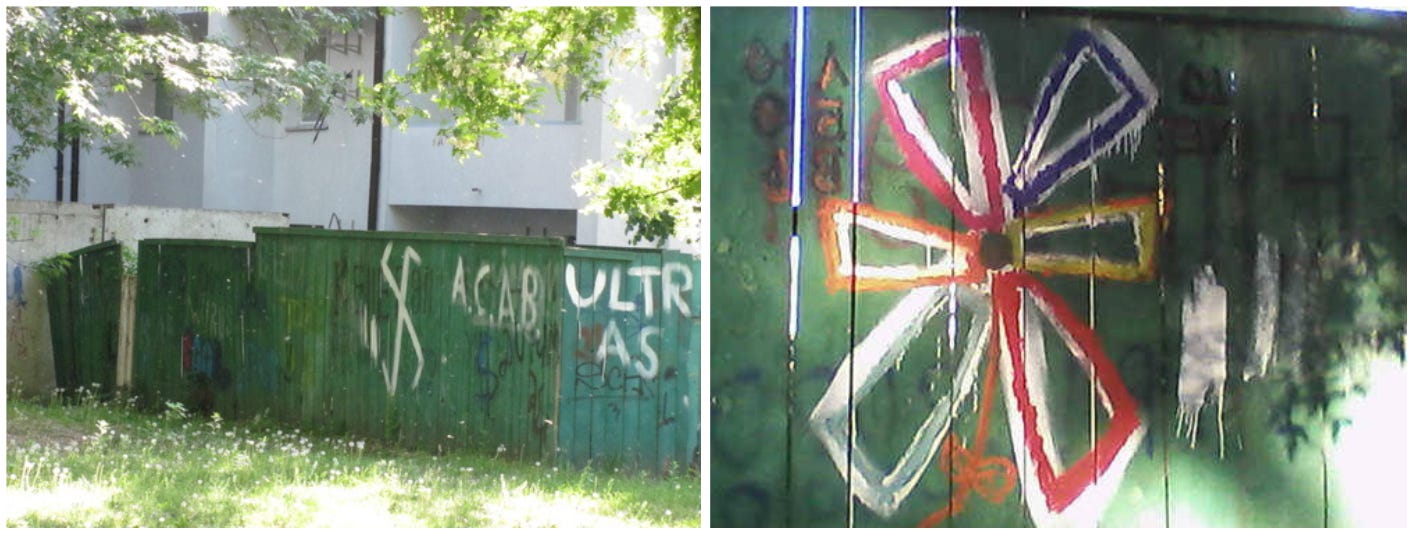
This might have been a decade ago, but swastikas appear every day around the country, and the world. A random sampling of spray-painted swastikas that made the news from the past two months include Wilmington, Delaware; Toronto, Canada; Hamilton, Ontario, Canada; by a highway in Virginia; on the side of a middle school in Middleboro, Massachusetts; on gravestones in Ripon, North Yorkshire, England; in the lunchroom of an elementary-school cafeteria in Arizona; on a Jewish politician’s election posters in Australia; and onward across the world. And it happens every day, the onslaught, and it will keep coming.
So be ready to place your pixels and wield your paint—and counter-deface these defacements. Here is a little tutorial with a few suggestions about how to do it.
Herewith, How To Turn a Swastika into a…
1. A Butterfly
Several years ago, a group of graffiti artists in Berlin launched the #PaintBack Project, which sought to transform any errant swastikas in Germany’s capital city into street art. Founder Ibo Omari turned this Nazi banner into a long-legged butterfly, with the flag’s white disk serving as a spotlight.
2. A Dancing Egyptian
The angularity of the swastika lends itself to a jaunty Keith Haring-style neo-hieroglyph, or a spunky gal about town.
3. An Adorable Animal
These always make for a good choice, and the four-square symmetry of certain animals’ faces can result in a Mondrianic take on, say, an owl or cat. In fact, a swastika can become any of your favored critters.
4. A Fish Wearing a Ballgown
As promised, this is my own contribution: a five-step metamorphosis from hate symbol into the epitome of elegance. Be sure to practice your anti-swastika art using a sharpie and notebook before taking to the streets with your arsenal of Krylon cans.
And if you’re reluctant to employ a tag as seemingly frivolous as a be-gowned goldfish, you can’t go wrong with one that’s sure to get under your neighborhood Nazi’s skin, like, say, two robots kissing.
So go forth, spray can or marker in hand, and make the world a little better. One line at a time.







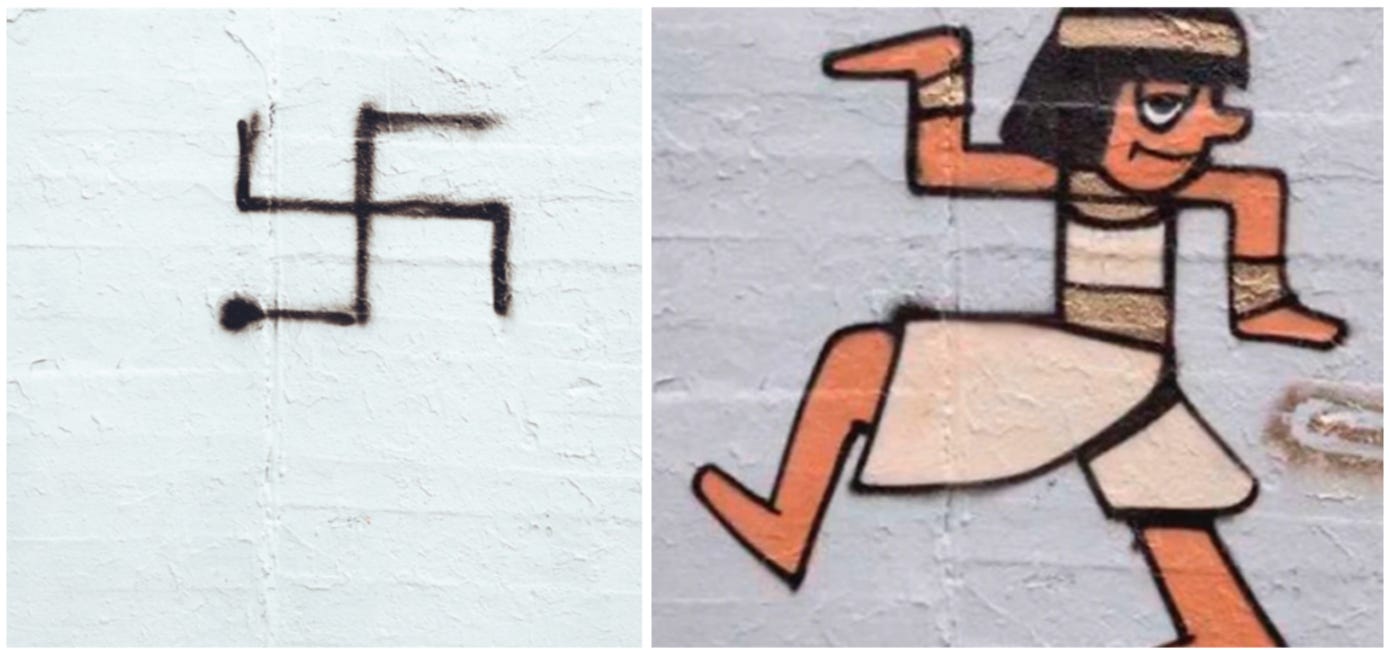
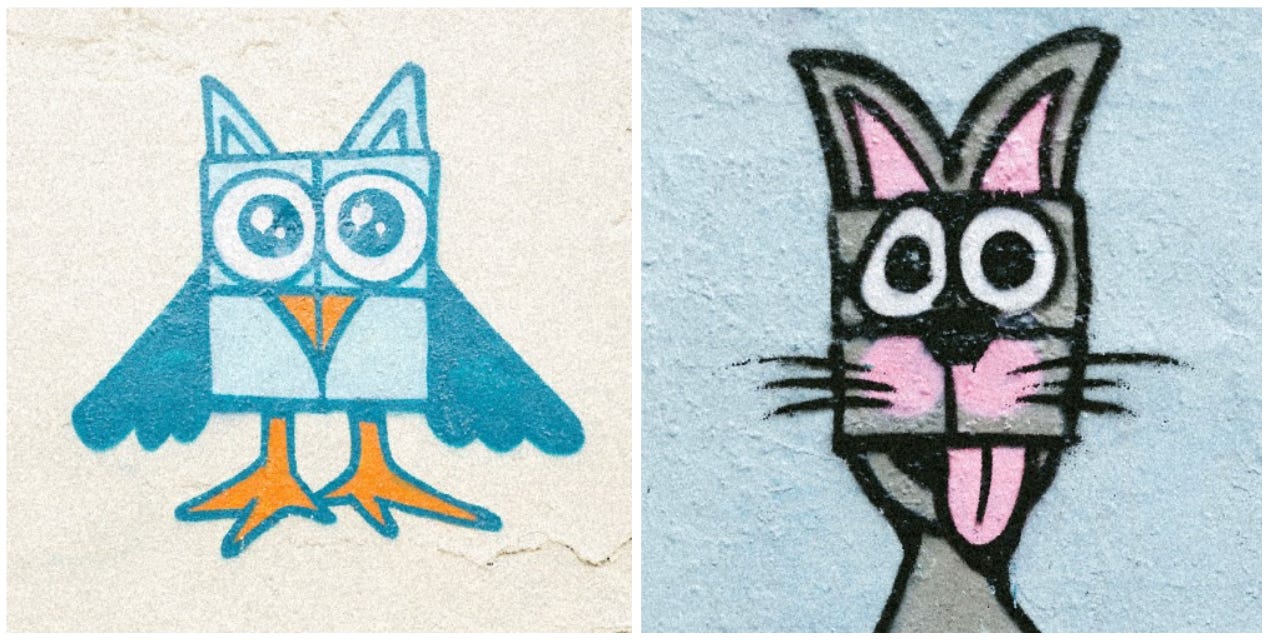

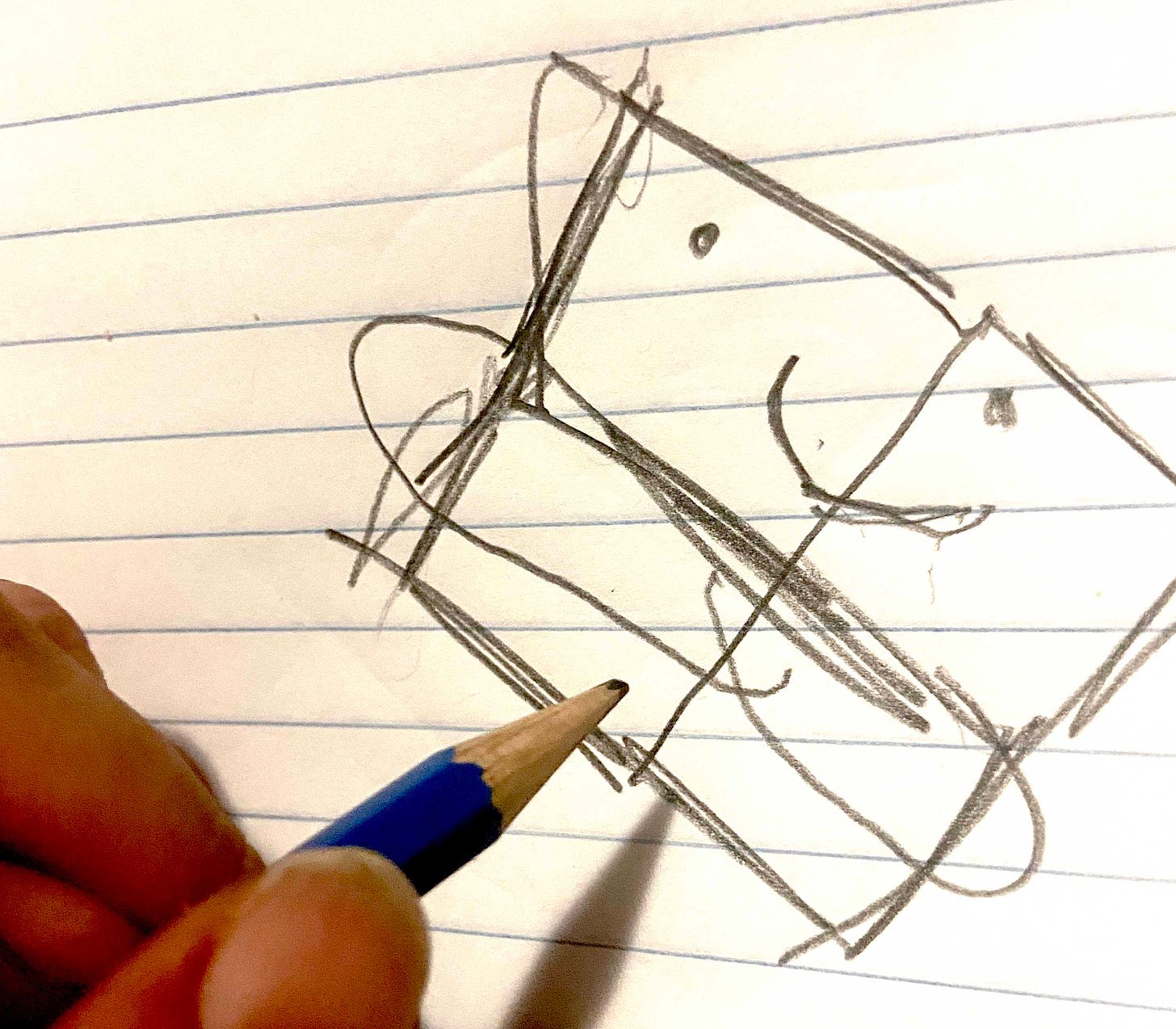

I'm partial to "Microsoft Windows" myself
I wish I could like this post a million times! Wonderful and inspiring. Thank you.